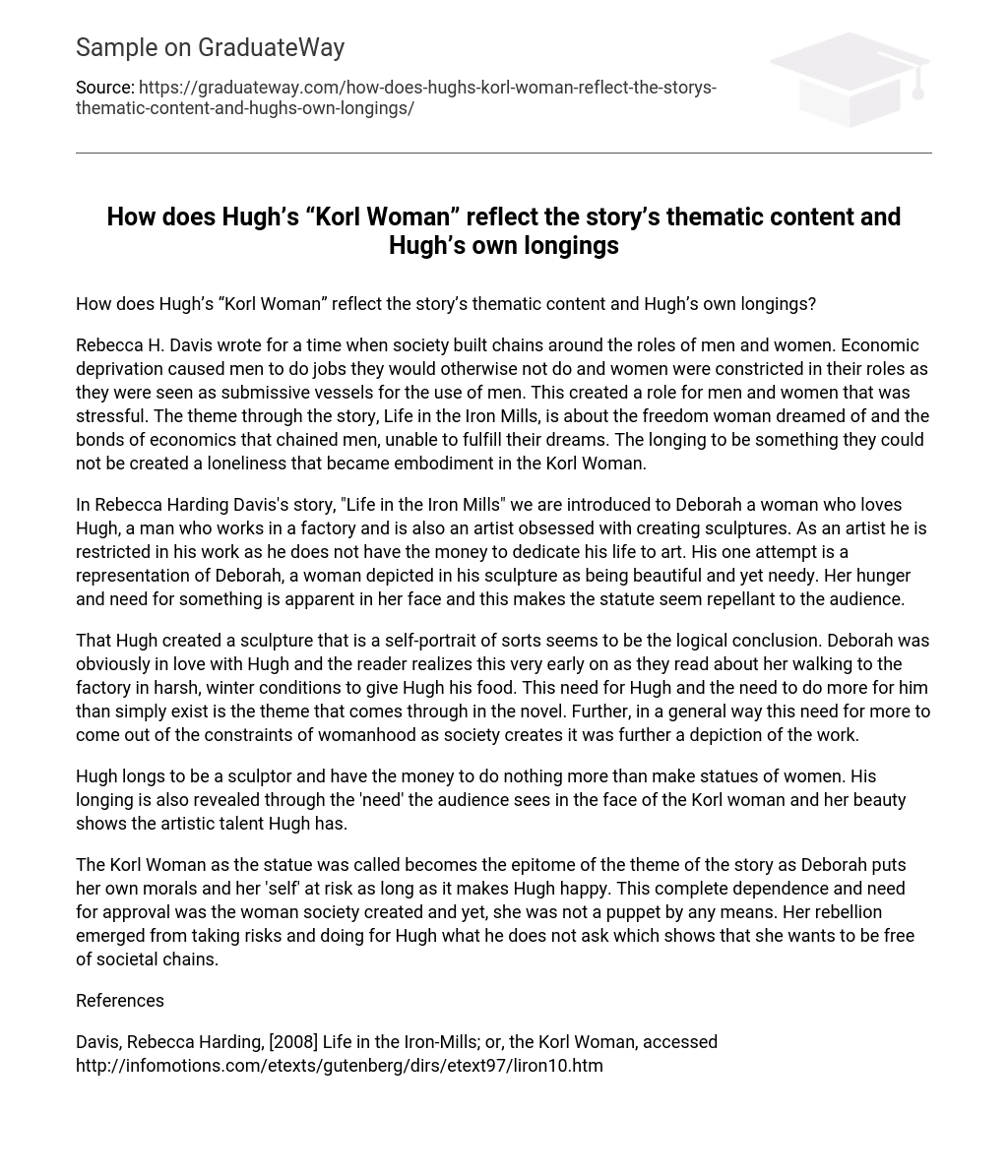How does Hugh’s “Korl Woman” reflect the story’s thematic content and Hugh’s own longings?
Rebecca H. Davis wrote for a time when society built chains around the roles of men and women. Economic deprivation caused men to do jobs they would otherwise not do and women were constricted in their roles as they were seen as submissive vessels for the use of men. This created a role for men and women that was stressful. The theme through the story, Life in the Iron Mills, is about the freedom woman dreamed of and the bonds of economics that chained men, unable to fulfill their dreams. The longing to be something they could not be created a loneliness that became embodiment in the Korl Woman.
In Rebecca Harding Davis’s story, “Life in the Iron Mills” we are introduced to Deborah a woman who loves Hugh, a man who works in a factory and is also an artist obsessed with creating sculptures. As an artist he is restricted in his work as he does not have the money to dedicate his life to art. His one attempt is a representation of Deborah, a woman depicted in his sculpture as being beautiful and yet needy. Her hunger and need for something is apparent in her face and this makes the statute seem repellant to the audience.
That Hugh created a sculpture that is a self-portrait of sorts seems to be the logical conclusion. Deborah was obviously in love with Hugh and the reader realizes this very early on as they read about her walking to the factory in harsh, winter conditions to give Hugh his food. This need for Hugh and the need to do more for him than simply exist is the theme that comes through in the novel. Further, in a general way this need for more to come out of the constraints of womanhood as society creates it was further a depiction of the work.
Hugh longs to be a sculptor and have the money to do nothing more than make statues of women. His longing is also revealed through the ‘need’ the audience sees in the face of the Korl woman and her beauty shows the artistic talent Hugh has.
The Korl Woman as the statue was called becomes the epitome of the theme of the story as Deborah puts her own morals and her ‘self’ at risk as long as it makes Hugh happy. This complete dependence and need for approval was the woman society created and yet, she was not a puppet by any means. Her rebellion emerged from taking risks and doing for Hugh what he does not ask which shows that she wants to be free of societal chains.
References
- Davis, Rebecca Harding, [2008] Life in the Iron-Mills; or, the Korl Woman, accessed http://infomotions.com/etexts/gutenberg/dirs/etext97/liron10.htm





